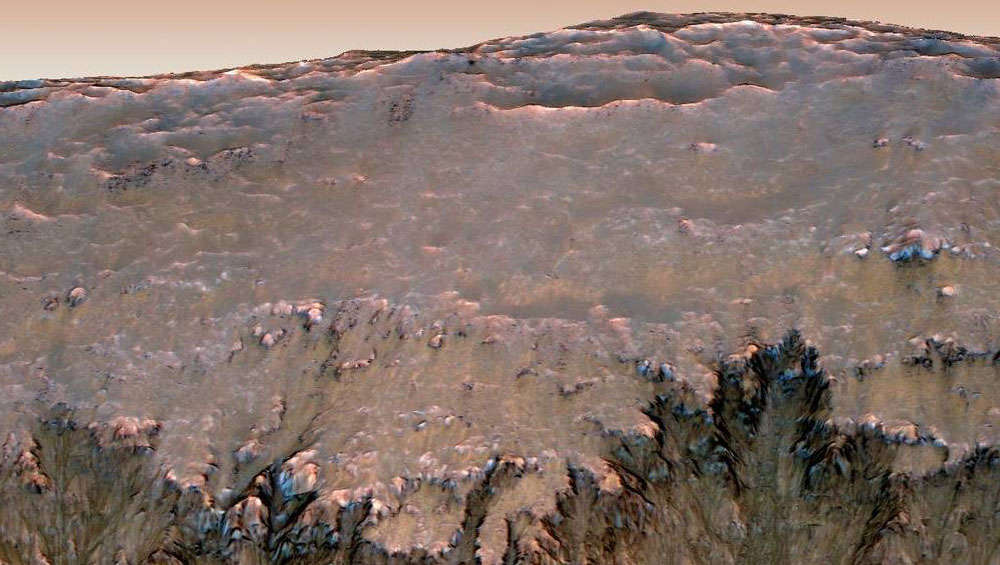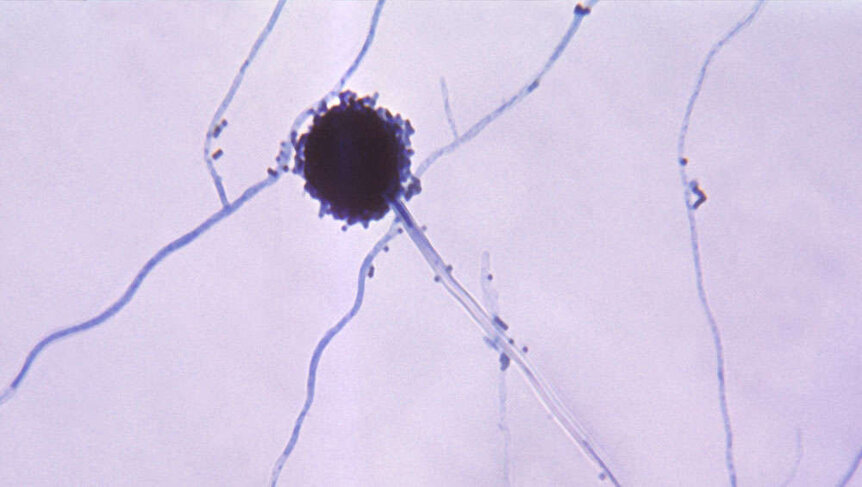Create a free profile to get unlimited access to exclusive videos, sweepstakes, and more!
Would life on Earth make it on Mars? Some could…

There is no way that unprotected humans could make it on Mars. Intense radiation, next to no atmosphere, and mostly carbon dioxide to breathe in (with hardly any oxygen) would make sure any of us wouldn’t last for long... but something else could.
There are a few creepy-crawlies that could handle hanging around on the Red Planet longer than we’d be able to. Scientists have found that some Earth microbes could survive on Mars temporarily after testing several types of bacteria and fungi for their survival skills by launching them into Earth’s stratosphere on the MARSBOx (Microbes in Atmosphere for Radiation, and Biological Outcomes experiment) space balloon, since the conditions up there are the closest our planet has to Martian atmospheric conditions. There is even one that could laugh in the face of space radiation.
So why send bacteria and fungi — some pathogenic — to the edge of space? Some microbes could give us an assist with producing food and supplies on Mars. We also have to know if the pathogens can survive the trek to Mars and beyond so they can be obliterated before anyone gets violently ill.
“Understanding microbial adaptations to either isolated and combined extreme environmental stressors helps establish the limits of life on Earth as we know it, determine whether terrestrial life could survive on Mars, and refine the search for life in other extraterrestrial habitats,” said the research team behind the MARSBOx experiment in a study recently published in Frontiers in Microbiology.
Passengers for this journey were an extremophilic bacteria, Salinisphaera shabanensis, that survives in the eldritch depths of the ocean, and Buttiauxella MASE-IM-9, which also thrives in environments on Earth so inhospitable they might as well be in space. Both S. shabaensis and Butiauxella are facultative anaerobes, meaning they can be anaerobic when they need to. Staphylococcus capitis (subspecies capitis) bacteria are pathogenic, though these are not so antibiotic-resistant or prone to forming harmful biofilms in your body as their sister subspecies urealyticus. Not that you’d want a staph infection either way.
The last and most dreadful microbes to fly were spores of Aspergillus niger, the infamous black mold no one ever wants to find in their bathroom. It can be potentially fatal if inhaled.
The microbes were placed onto quartz discs and desiccated over five months in an environment that simulated Martian atmospheric conditions and pressure. They then loaded into the pressurized Trex-Box, which shielded them from radiation exposure in the ascent and descent phases, and were only exposed to radiation when they reached the stratosphere. MARSBOx floated above the ozone layer that keeps Earth life from getting fried. At this level, the microbes were subjected to levels of UV radiation that were about equal to those on Mars.
What survived? S. shabaensis surprised the scientists because it held up through months of desiccation and seven hours of exposure to harsh UV rays, despite being an unpigmented deep-sea dweller. You would probably expect the staph member of this micro-crew to pull through, but it ultimately succumbed. The controls kept on terra firma for comparison survived desiccation in the simulated Mars environment. This could mean that oxygen on Earth might get in the way of microbes surviving desiccation. Buttiauxella, which couldn’t even get through desiccation, fared even worse. The survivor that shocked no one was A. niger.
“Fungal spore sensitivity to extreme heat or to high doses of combined sources of space radiation, as well as to other factors that affect survivability (e.g., regolith reactive compounds or regolith shielding), should be further evaluated to better assess the forward contamination potential in Mars analog environments,” the scientists said.
Black mold has been found on the ISS before, which showed it could stay alive in spite of really high UV levels and other cosmic radiation, so future astronauts heading to Mars might have to pack fungicide. The spores had no problem with simulated Martian conditions in a lab or extreme temperature fluctuations and radiation-bombing in the stratosphere. Their melanin pigment, thick cell walls, and a possibly UV-resistant chemical they produce saved them, but there are positives along with the negatives usually associated with this fungus. It is actually used in biomanufacturing here on Earth and could be on Mars.
Fungi could turn out to be useful on Mars. Some types could even be grown into habitats that block out solar and cosmic radiation. For now, though, if you do see any black mold in your bathroom or anywhere else, spray it with mold killer.



























